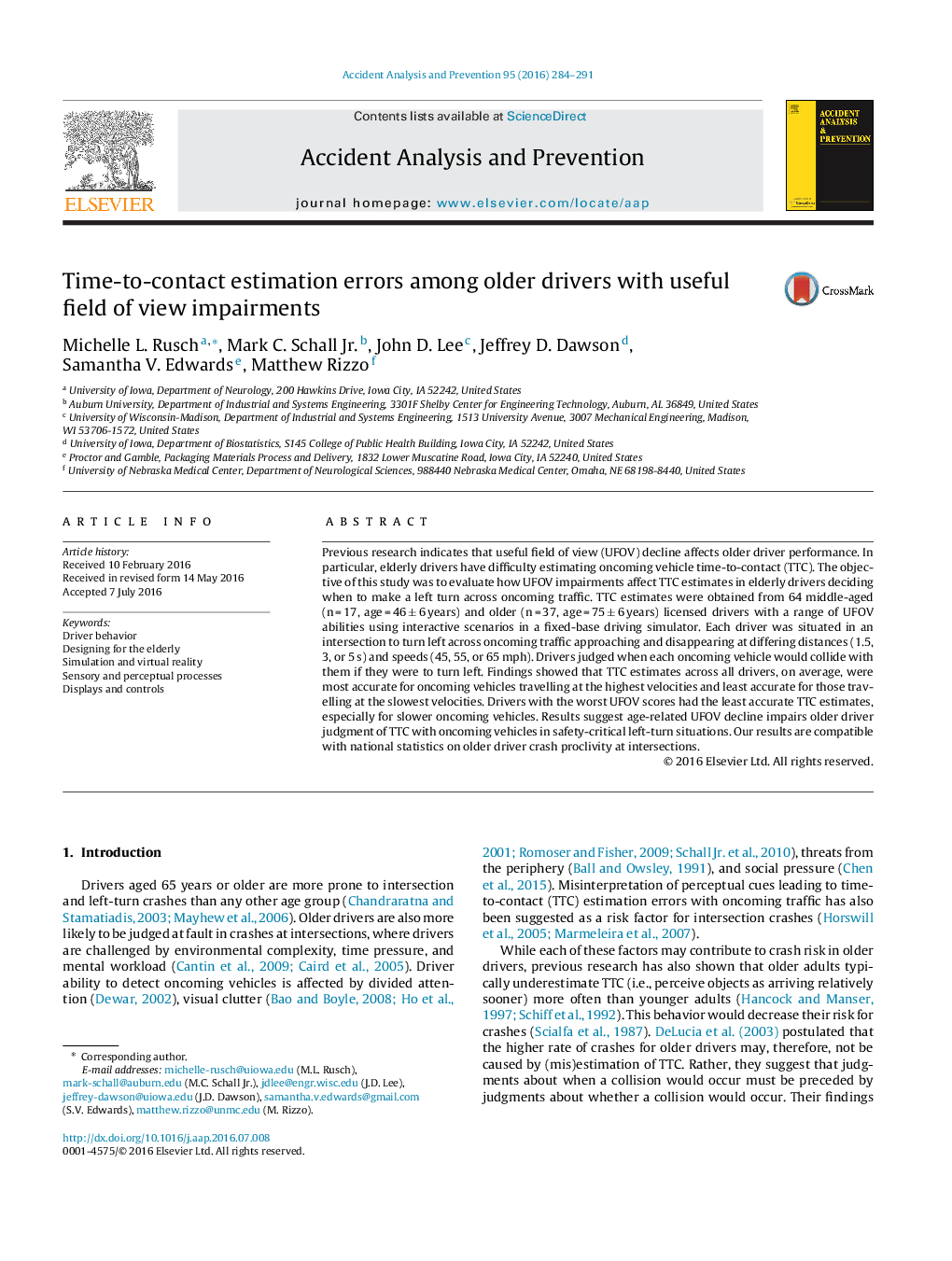| Article ID | Journal | Published Year | Pages | File Type |
|---|---|---|---|---|
| 571936 | Accident Analysis & Prevention | 2016 | 8 Pages |
•Speed and distance affected TTC estimates, especially among UFOV impaired.•Drivers with the poorest UFOV scores had the most inaccurate judgments of TTC.•Drivers with UFOV impairments exhibited the most underestimation bias.•Response times were least accurate for vehicles travelling at the slowest speeds.
Previous research indicates that useful field of view (UFOV) decline affects older driver performance. In particular, elderly drivers have difficulty estimating oncoming vehicle time-to-contact (TTC). The objective of this study was to evaluate how UFOV impairments affect TTC estimates in elderly drivers deciding when to make a left turn across oncoming traffic. TTC estimates were obtained from 64 middle-aged (n = 17, age = 46 ± 6 years) and older (n = 37, age = 75 ± 6 years) licensed drivers with a range of UFOV abilities using interactive scenarios in a fixed-base driving simulator. Each driver was situated in an intersection to turn left across oncoming traffic approaching and disappearing at differing distances (1.5, 3, or 5 s) and speeds (45, 55, or 65 mph). Drivers judged when each oncoming vehicle would collide with them if they were to turn left. Findings showed that TTC estimates across all drivers, on average, were most accurate for oncoming vehicles travelling at the highest velocities and least accurate for those travelling at the slowest velocities. Drivers with the worst UFOV scores had the least accurate TTC estimates, especially for slower oncoming vehicles. Results suggest age-related UFOV decline impairs older driver judgment of TTC with oncoming vehicles in safety-critical left-turn situations. Our results are compatible with national statistics on older driver crash proclivity at intersections.
